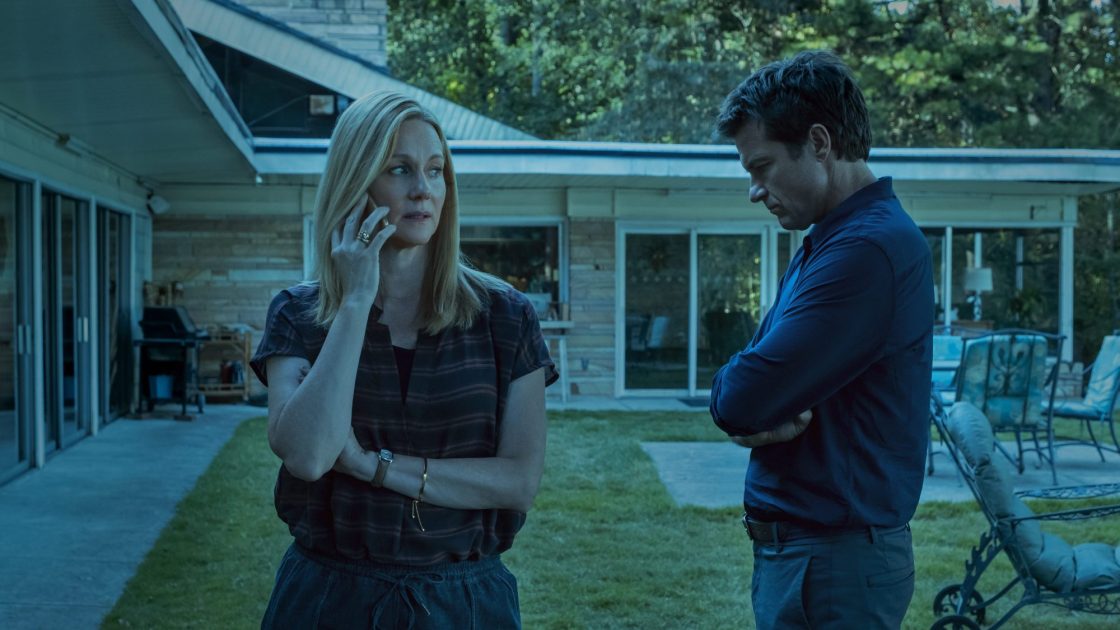By Bella McEnroe, Media and Communication, ’24
Ozark, a Netflix original that came out in 2017 stars the Byrde family and their middle class life. Marty Byrde is a financial planner working in Chicago who abruptly relocates his family to the Ozarks. While living there he involves not only himself, but his family too, in laundering money for a drug cartel. Ozark takes the idea of a middle class mindset to a whole new level implying that those with this lifestyle will do whatever they can to keep up.
The show revolves around this character of Marty, who has children who aren’t interested in him and a wife that has simply fallen out of love. Their jobs place their family in the middle class ranking. This idea of class is brought into play during a scene where the couple is sitting with their financial advisor, having a discussion on how exactly to spend their money. Hitting home with the middle class, the show brings up a lot of post-great recession structural problems that we still have. Having a behavioral connect to the middle class (Teodorczuk).
Marty Byrde has no problem when it comes to leaving the boring middle class life he knows and moving to the Ozarks. It is evident in his whole family’s reactions after moving that they are no longer “bored”. The show picks up immensely once the money laundering begins and gets rid of stigmas around a middle class family. Those who are familiar with this lifestyle can understand that you’re working for stability and a semi-decent life. Ozark, is considered a middle class nightmare amped to the extreme — in a blink everything you’ve worked for is gone, your stability shattered and the future is feared for (Egner) making the show all the more interesting.
The middle class is known to have pressure in regards to keeping their social status where it is. Ozark depicts this by taking it to a whole new level, showing the emotional tension of the American and the global, middle class. Under increasing pressure to maintain its rank in the face of an attack by corporate capital which is affecting this class as well as the working class below (Broe). The Byrde family has no problem with going to extreme lengths, risking their lives and the lives of others to keep the life they’ve known.
The Byrde’s also meet other types of families during their stay at the Ozarks, one being a more extreme low-ranking family compared to theirs. Ruth, a member of this family, is a teenager who forms a strong bond with Marty Byrde. She was once known for her thieving ways but, after meeting Marty something changes. He too wants to take her from this lower class life. Marty and Wendy Byrde bring Ruth into their home on multiple occasions where she lives what could be considered a “better” lifestyle. Showing the contrast between the middle and lower class furthers the idea that those in the middle class will do what they can to stay there, and help those they care for get to it. Not only is this shown through the characters but the setting, where expansive waterfront mansions sit within a few miles of trailer parks (Egner).
Whether or not this depiction of the middle class is as accurate as many would think, the idea is brought up frequently. The whole show features this family working for someone higher up to maintain their position on the social class scale. If the Byrde family doesn’t keep fighting, they will be killed or, in middle-class terms, fall into the working-class poverty of those who surround them in the Ozarks, which is a kind of death for this class (Broe). Through this constant battle the middle class mindset emerges, showcasing the security people in this state feel in regards to their position in society.
References
Broe, Dennis. “’Ozark’ and Middle-Class Life under Pressure; Dr. Freud in ‘Vienna Blood’.” People’s World, 14 Apr. 2020, peoplesworld.org/article/ozark-and-middle-class-life-under-pressure-dr-freud-in-vienna-blood/.
Egner, Jeremy. “’Ozark’ on Netflix: This Lake Has Hidden Depths.” The New York Times, The New York Times, 14 July 2017, www.nytimes.com/2017/07/14/arts/television/ozark-netflix-jason-bateman-laura-linney.html.
Teodorczuk, Tom. “We Asked Financial Advisers: How Realistic Is Netflix’s Show ‘Ozark’?” MarketWatch, MarketWatch, 19 Aug. 2017, www.marketwatch.com/story/we-asked-financial-advisers-how-realistic-is-netflixs-new-show-ozark-2017-08-02.
